

In Hong Kong, many traditional villages can still be found. Of the 707 registered villages across the New Territories and islands, at least 100 are ghost communities, deserted by the clan, often overgrown and disappearing under vegetation. The 600 surviving villages are working hard to keep alive their heritage and communal traditions.
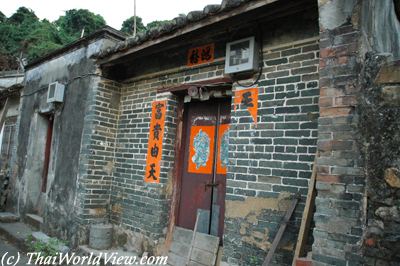
|
In 1925 the Government restore to the Tang clan
the village gates of Kam Tim, removed in 1899 because
of the clan's opposition to the leasing of New Territories.
|
| Tai Po Kau San Wai |
|---|
Walled villages face an uncertain future. In 1995, there were at least 70 such communities, reminders of the turbulence of 17th century southern China, when clansmen walled up their villages against marauding pirates and bandits.
|
The Hakka are relative newcomers to the Hong Kong region. The Punti arrived starting in
the 12th century so they had already taken the most fertile land, leaving to the Hakka the
poorer land.
|
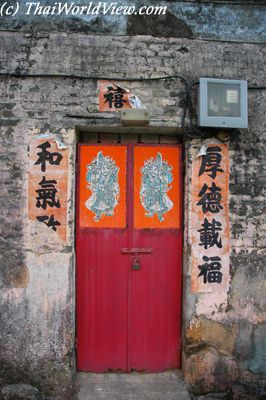
|
| Tai Po Kau San Wai |
|---|
The Territory Development Department in 1973 started planning and design of the new towns which changed the face of rural regions.
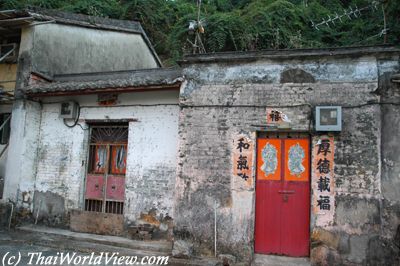
|
The Heung Yee Kuk is an historical organization
to serve as a bridge for the New Territories residents and also the Hong Kong government.
|
| Tai Po Kau San Wai |
|---|
The Heung Yee Kuk organization represents about 700 villages covering about 500 000 to 700 000 people, mainly indigenous villagers. These are grouped into 27 rural committees, which elect a chairman, vice chairman and executive committee.
|
An ancestral temple is not open to the public: it is for private use of the clan, for whom
it has any meaning. Most villages have ancestral temples and in
multi-clan villages there are sometimes several.
|
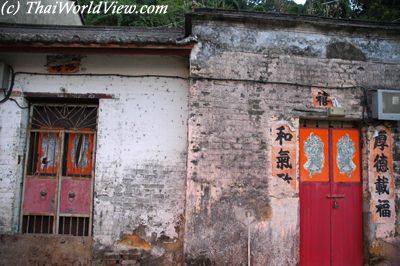
|
| Tai Po Kau San Wai |
|---|
About 300 people remain in semi-abandoned hamlets, which are concentrated near Tai Po, Sha Tau Kok and Sai Kung.

|
Many elderly New Territories villagers are languishing in rural loneliness because
they say the Government refuses to build roads to their isolated settlements.
They often live in fear of illegal immigrants, a fall or illness.
|
| Sheung Shui |
|---|
There are not enough people to justify the building of roads but, if they were built, more people could live in the villages.
|
Storage yards are common in the northeast New Territories, offering a base from
which truck drivers take containers across the border to Shenzhen via the Lok Ma
Chau checkpoint. Base stations for mobile networks are numerous on some local
houses!
|
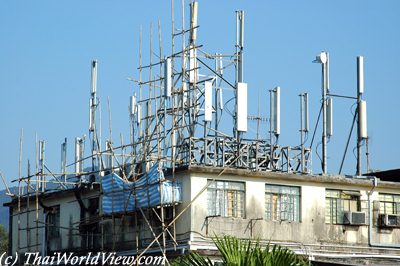
|
| Along Sha Tau Kok Road |
|---|
Many container yards often operated alongside residential estates, villages and environmentally sensitive areas.

|
Many trucks cross the border to China. So in New territories many mechanical workshop
are playing host to container trucks and lorries, fixing their engines, washing them down,
spreading grease, oil and fumes across the area.
|
| Containers along Sha Tau Kok Road |
|---|
Some villagers with rights to build often sell that right to others for lucrative land developments, or they build a house only to sell it on quickly for profit.
|
In the New Territories there is a wasteland of many disused containers, wrecked cars and
so-called small houses which are built to maximise their plots so that only centimeters separate
one house from the next.
|

|
| Containers along Sha Tau Kok Road |
|---|
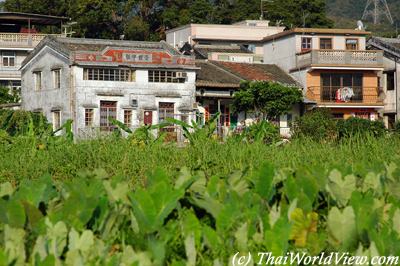
|
As farming became increasingly unprofitable, indigenous people began renting their
agricultural land to container storage businesses.
|
| Along Fanling highway |
|---|
It was only in 1991 that the government gradually imposed zoning controls in the rural areas that specified which land was for agricultural use, open storage, conservation, green belt and residential development.
|
The Small House policy dates from 1972 and grants indigenous
male villagers the right to build a small house. The same right does not extend automatically
to indigenous females.
|

|
| Along Fanling highway |
|---|
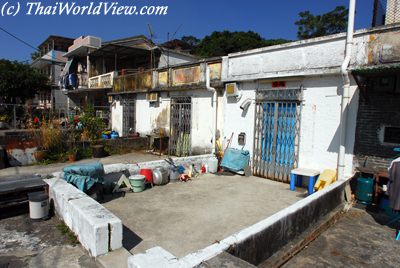
|
It was part of the British promise to the New Territories villagers when they took Hong Kong
in 1898 that they would keep indigenous customary laws.
|
| Lung Yeuk Tau |
|---|
|
In 2002 it was reported how thousands of village houses
have been built on government land and gone unnoticed for years. Villagers and developers
have taken advantage of inadequate enforcement measures, with officials being
forced to tolerate the problem due to limited resources.
|

|
| Village close to Ping Che Police Post |
|---|
Some private developers have turned government land into gardens. Government land occupied illegally for 60 years can be turned into private sites.
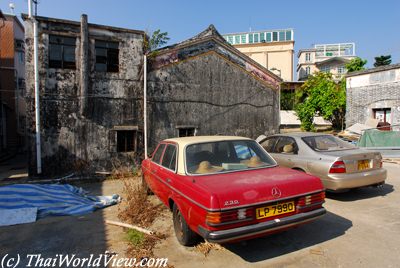
|
Some indigenous people are renting parking plots in villages. But those plots
belong to government!
|
| Tai Kwu Ling |
|---|
|
In Shenzhen in year 2012, two old Chinese traditional houses
were found near a big hotel close to Huang Guang border.
|
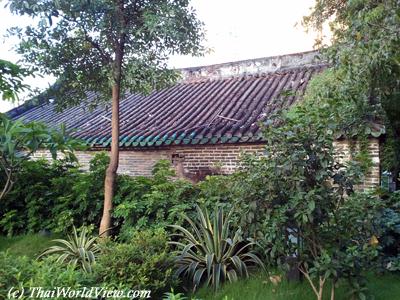
|
| Old traditional house in Shenzen |
|---|
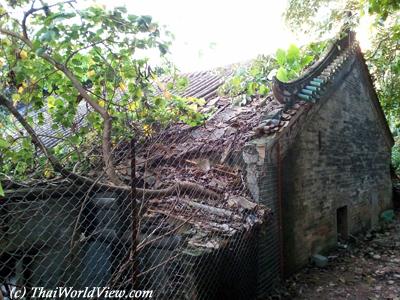
|
This is very surprising to find such old traditional houses in modern and hyper developed
Shenzhen megacity.
|
| Old traditional house in Shenzen |
|---|
|
Such kind of houses can be found in rural areas around Hong Kong or Shenzhen but
very seldom in city heart.
|
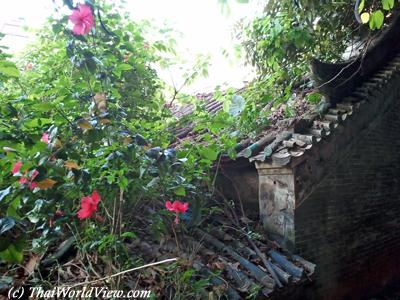
|
| Old traditional house in Shenzen |
|---|
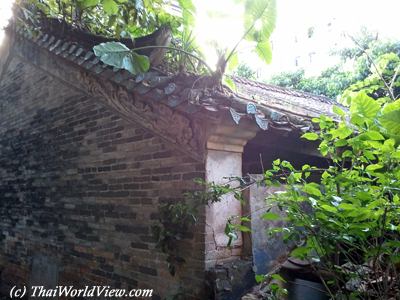
|
Anyway those traditional Chinese houses won't last long as a redevelopment will start soon.
Clearing the past to build a future is a Chinese saying.
|
| Old traditional house in Shenzen |
|---|
In the past, Hong Kong people could buy many flats in Shenzhen and resell them with a profit. It causes the local market to heat up and it became very difficult for local people to buy flat in Shenzhen. A new law was promulgated. Hong Kong citizen could only own one flat in Shenzhen. Now the opposite is happening in Hong Kong. Chinese citizen, who buy a flat higher than 5M HKD, can request the permanent ID card. It causes the local market to heat up also.
Click to see more pictures |
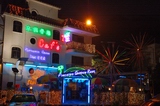
|
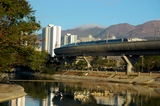
|
| Home > Society > Villages |
| Page 1 | Page 2 | Page 3 |
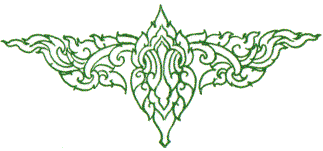
|